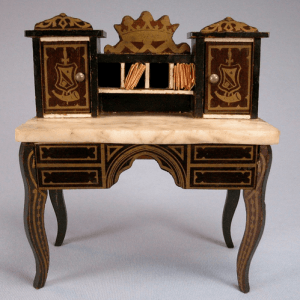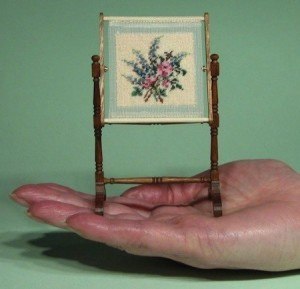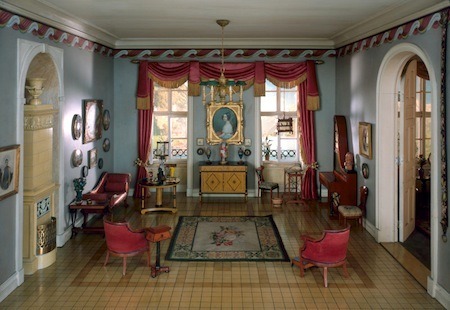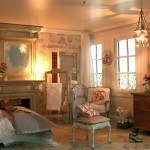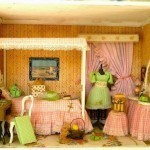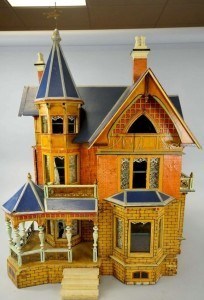
Gottschalk Blue Roof Early Victorian, which overlaps the Biedermeier period
Biedermeier dollhouses do not exist!
Don’t believe me? To quote Casey Stengel, the long-time manager of the New York Yankees, “You can look it up!” Use “biedermeier dollhouse” as a search term in your browser. A directory of furniture and decorating hits come up, but no dollhouses using the “B” word.
Biedermeier refers to a period of time, roughly 1815 – 1848. The Napoleonic Wars had drained the European economies. The German and Austrian middle classes longed for the good old days before Napoleon decided to rule the world. They wanted peace and quiet and stability, a comfortable home with lots of family around. That meant furniture that was comfortable and inexpensive.
The early 19th century was also a time of great artistic creativity, with Beethoven, Goethe, and Delacroix leading the way. The artistic elite scoffed at this boring middle class attitude, naming it after Papa Biedermeier, a humorous bumpkin who young folks today might call a “dufus.”.
Here are a few design principles of the Biedermeier era:
Furniture
Start with these descriptors: simple, practical, functional, comfortable, durable, has sentimental values, is free of excessive decorations.
Biedermeier pieces might have a gently curving back for additional comfort. Chairs and sofa armrests could be covered with decorated fabrics. Table, sofa, and chair legs often have curvy legs.
Fabric
Most anything inspired by nature was popular, especially upholstery fabrics. Window curtains tended to be light, solid colors. The upper-middle class might splurge on heavier draping, in dark colors.
Walls
Interior walls with deep window niches were decorated with white or pastel paint in pleasant tones. If a wallpaper was used, a small floral pattern would be about as adventuresome as they got.
Wall Art
The best rooms were closed during weekdays to save on wear and tear. These so-called Sunday Rooms were decorated with the best the family could afford to impress guests. Oils were not as popular as soft watercolors, especially in rural landscapes, and forest scenes. Black and white prints were a new thing … and they were moderately priced.
Overall Effect
The simplicity of furniture forms, combined with pleasant room colors and nature-inspired upholstery fabric patterns created a calming and welcoming atmosphere.
Think how Biedermeier décor might fit into dollhouse eras. Early Victorian dollhouses seem a good fit because the style is not as flamboyant as it would later become. Room boxes are a good idea. There is a Thorne Room pictured above, for instance.
So consider Biedermeier decor or individual pieces. It can have a clean look that looks good with many styles.
Susan Downing, with Patrick Owens


